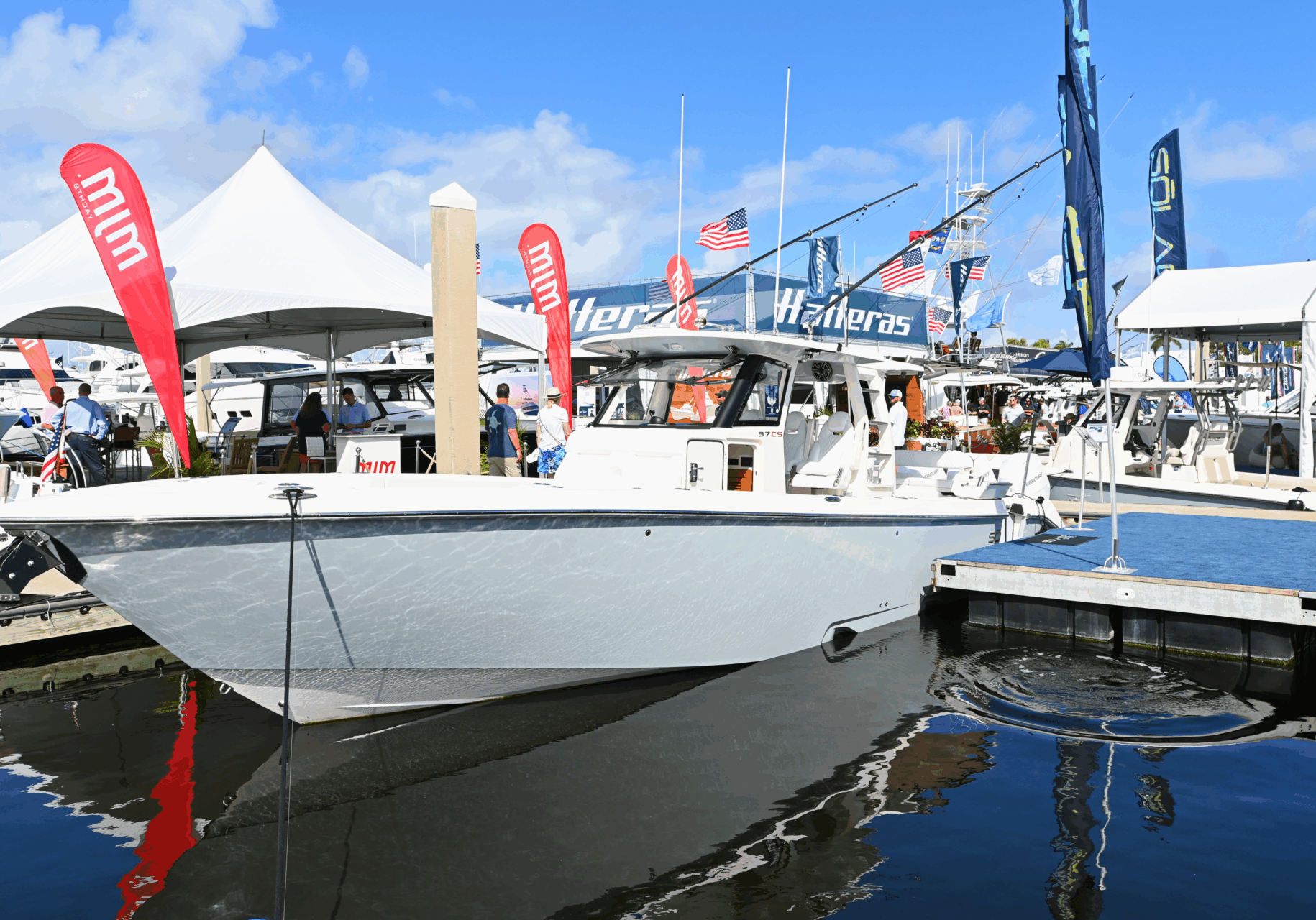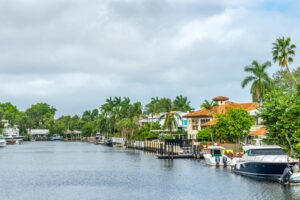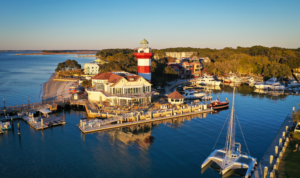How Boat Prices Work: Base Price, MSRP, and What You’ll Really Pay

Making Sense of Boat Prices
Shopping for a boat can feel overwhelming, especially when you start seeing terms like “base price,” “MSRP,” and “out-the-door price” thrown around. If you’re new to the world of boats, you might wonder what all these different prices mean and how they fit into your budget. Understanding boat prices is essential, whether you’re buying a hardcore fishing boat, a family-friendly pontoon, or a luxury cruiser.
Every boat price you encounter serves a purpose, from the starting point of the base price to the final cost you pay after taxes, fees, and add-ons. Add in financing options, trade-ins, and discounts, and it’s easy to see why boat shopping feels like a numbers game.
In this article, we’re breaking it all down for you. We’ll cover the different types of boat prices, from MSRP to the dealer’s asking price, and how financing and add-ons can affect your budget. You’ll also learn how to navigate hidden costs, compare options, and negotiate like a pro. Whether you’re a first-time buyer or an experienced boater looking to upgrade, this guide will help you understand exactly what you’re paying for and how to get the best deal.
The Types of Boat Prices You May See
When shopping for a boat, you’ll encounter several types of prices, each reflecting different stages of the purchase process. Here’s a breakdown of the most common ones you’ll see and what they mean:
Base Price
The base price is the starting point for most boats and represents the cost of the boat in its most basic configuration. Think of it as the no-frills version—just the essentials, no add-ons. Manufacturers use the base price to advertise affordability, but in reality, very few boats are sold at this price. Once you start adding features like upgraded engines or luxury finishes, the price quickly climbs.
MSRP (Manufacturer’s Suggested Retail Price)
The MSRP, or sticker price, is the number manufacturers suggest dealers sell the boat for. It typically includes standard features and may factor in some transportation costs, but it’s not the final price. Dealers can adjust this up or down based on market demand, so don’t assume the MSRP is non-negotiable. Comparing boat MSRPs is a good starting point when you’re shopping around.
Invoice Price
The invoice price is what the dealer pays the manufacturer for the boat. While this number isn’t often visible to buyers, it’s a useful benchmark for negotiations. Knowing the invoice price gives you leverage, especially when you’re trying to negotiate below the MSRP.
Dealer Price (Asking Price)
This is the price you’ll likely see listed on a boat dealer’s website or showroom floor. The dealer price reflects their profit margin, added features, and local market conditions. It’s also where your negotiation skills come into play. Whether you’re buying a new or used boat, remember that the asking price is rarely set in stone.
Out-the-Door Price (OTD Price)
The out-the-door price is the most important number to focus on. It’s the total cost you’ll pay once everything is included—taxes, registration fees, and dealer fees. Many buyers overlook these added costs, but they can significantly impact your budget. Always ask for the OTD price to avoid surprises when it’s time to sign the paperwork.
Trade-In Value
If you’re upgrading from an existing boat, your trade-in value plays a big role in determining your final price. Dealers assess your boat’s condition, age, and market demand to calculate this value. Be sure to shop around for estimates to maximize your trade-in’s impact on the deal.
Discounted or Promotional Pricing
Seasonal promotions, boat show deals, and special manufacturer incentives can bring down the price of a boat significantly. For instance, buying a boat during end-of-season sales might help you snag a discount. Keep an eye out for these opportunities, especially if you’re on a tight budget.
How Features and Add-Ons Affect Prices
Once you’ve wrapped your head around the base price or MSRP of a boat, it’s time to consider how features and add-ons impact the final cost. This is where things get interesting—and expensive.
Upgraded Engines
One of the most significant factors influencing boat prices is the engine. Many boats come with a standard engine included in the base price, but upgrading to a more powerful engine or adding more engines can add thousands of dollars. For example, opting for a larger outboard motor on a Ponton or a twin-engine setup on a center console can dramatically increase the cost. Always compare your needs with the added expense to determine if the upgrade is worth it.
Electronics and Navigation Systems
Modern boats are equipped with high-tech navigation and entertainment systems, but they don’t always come standard. Adding GPS units, fish finders, and premium sound systems can quickly escalate the cost. While these upgrades enhance the experience, it’s essential to prioritize what you’ll actually use on the water.
Luxury Finishes and Comfort Features
Custom upholstery, teak accents, and premium finishes can elevate the look and feel of your boat, but these luxuries come at a price. Boats designed for entertaining or family outings often include options like premium seating, swim platforms, or built-in coolers. These features may be included in a package deal, but some are priced individually, adding to the overall cost.
Fishing and Watersports Packages
Many boat manufacturers offer specific packages tailored to certain activities, like fishing or watersports. A fishing package might include rod holders, livewells, and upgraded trolling motors, while a watersports package might feature tow hooks, ballast tanks, and wakeboarding towers. These bundles can be cost-effective if you plan to use all the features, but they can also push the price beyond your initial budget.
Trailers and Transport Costs
Don’t forget about how you’ll get your boat to and from the water. Trailers are often sold separately, and the price depends on the size and weight of your boat. Additionally, if you’re purchasing from an out-of-state dealer, transportation fees may apply, adding another layer to the cost.
Safety and Compliance Equipment
Many buyers overlook the cost of required safety equipment like life jackets, fire extinguishers, and flares. While not typically included in the base price, these items are essential and required by law in most areas.
How to Prioritize Add-Ons
Before committing to a feature-heavy boat, ask yourself what you truly need versus what’s “nice to have.” If you’re unsure, consider starting with the essentials and upgrading later. Understanding the cost of features and add-ons upfront will help you avoid surprises and stay within budget.
Financing Costs
For most buyers, financing is the key to making a dream boat a reality, especially when it comes to higher-priced models. Boat loan rates and terms can vary widely, influenced by factors like the boat’s value, your credit score, and the duration of the loan. Typically, interest rates range from 4% to 10%, with loan terms stretching anywhere from 5 to 20 years.
Exploring Boat Financing Options
When financing a boat, it’s important to choose a lender and terms that align with your budget and goals. Here are three common financing options:
- Dealer Financing: Many dealers offer in-house financing with competitive rates, making it a convenient option for buyers looking for a streamlined process.
- Bank Loans: Traditional banks and credit unions often provide boat loans with flexible terms, allowing you to shop for the best rate.
- Marine Lenders: Specialized marine financing companies cater to boat buyers, offering tailored plans for new and used boats that may include additional perks like flexible payment schedules.
Choosing the Best Fit for Your Budget
Comparing loan options is essential to finding the right fit. Ask lenders about monthly payment estimates, interest rates, and any hidden fees. Understanding the total cost of the loan—beyond just the monthly payments—will help you make a well-informed decision.
Example – Pricing Breakdown for the Sea Hunt Ultra 255 SE
To help illustrate how boat prices can vary based on upgrades, add-ons, and financing, let’s look at the Sea Hunt Ultra 255 SE as an example. This popular center console boat is a fantastic choice for fishing, cruising, and family outings. However, like many boats, its final price depends on the features you choose.
Base Price and Upgrades
The Sea Hunt Ultra 255 SE starts at a base price of $129,794. At this price, you’re getting the standard configuration, including twin Yamaha F300 engines and basic finishes. However, upgrading and customizing the boat can quickly increase the total cost. Here’s a breakdown of some popular upgrades and their prices:
- Engine Upgrade: Switching from twin Yamaha F300s to twin Yamaha F350s adds $4,616.
- Hull Color: Adding a custom hull color costs $969.
- Interior Upholstery: Changing from standard white to tan or grey upholstery costs $656.
- Hardtop Additions: Adding an underside color to the hardtop is $438, and installing kingfish rod holders is an extra $250.
- Premium Features: Gemlux outriggers cost $3,438, while Yamaha autopilot adds $3,375.
- Electronics Upgrade: Upgrading from a single 12-inch Garmin MFD to twin 12-inch Garmin MFDs increases the price by $3,681.
If you were to include all the available upgrades and premium features, the price of the boat rises to $154,831.
Financing the Sea Hunt Ultra 255 SE
Financing a boat like the Sea Hunt Ultra 255 SE can make your purchase more manageable by spreading the cost over time. However, the loan term and interest rate you choose have a significant impact on both your monthly payments and the total amount you’ll pay over the life of the loan. Let’s break this down with examples using both the base price of $129,794 and the fully upgraded price of $154,831.
Short-Term Loans: Higher Payments, Lower Total Costs
Shorter loan terms, such as six years, come with higher monthly payments but save you money in the long run. For example:
- 6-Year Loan at 5% Interest:
- Base Price: Approximately $2,090 per month.
- Fully Loaded Price: Approximately $2,494 per month.
- Total Paid Over 6 Years:
- Base Price: $150,480
- Fully Loaded Price: $179,568
- 6-Year Loan at 7% Interest:
- Base Price: Approximately $2,213 per month.
- Fully Loaded Price: Approximately $2,640 per month.
- Total Paid Over 6 Years:
- Base Price: $159,336
- Fully Loaded Price: $190,080
While these loans result in larger monthly payments, they reduce the amount of interest paid over time, keeping the total cost lower. This option is ideal for buyers who have the financial flexibility to handle higher monthly payments and want to minimize overall expenses.
Longer-Term Loans: Lower Payments, Higher Total Costs
Longer loan terms, such as 10 or 20 years, offer lower monthly payments but increase the total amount paid due to extended interest accrual. For example:
- 10-Year Loan at 6% Interest:
- Base Price: Approximately $1,441 per month.
- Fully Loaded Price: Approximately $1,719 per month.
- Total Paid Over 10 Years:
- Base Price: $172,920
- Fully Loaded Price: $206,280
- 20-Year Loan at 8% Interest:
- Base Price: Approximately $1,081 per month.
- Fully Loaded Price: Approximately $1,290 per month.
- Total Paid Over 20 Years:
- Base Price: $259,440
- Fully Loaded Price: $309,600
While longer terms may seem more budget-friendly month to month, the additional years of interest significantly increase the total cost. These loans work best for buyers prioritizing lower monthly payments but are willing to pay more over time.
Choosing the Right Term for Your Budget
When deciding on loan terms, it’s crucial to balance affordability with long-term cost savings. If you can handle higher monthly payments, a shorter term saves money over the life of the loan. On the other hand, longer terms provide flexibility for buyers who need lower monthly payments but understand the trade-off of paying more overall.
For example, if you opt for the fully upgraded Sea Hunt Ultra 255 SE at $154,831:
- A 6-year loan at 5% will cost $25,263 less over the loan term than a 10-year loan at 6%.
- A 20-year loan at 8% costs $130,032 more than the 6-year loan at 5%.
This comparison shows how understanding loan structures can significantly affect your total cost and help you make an informed decision.
Final Thoughts on the Example
As you can see, the initial base price of a boat is just the starting point. Add-ons, upgrades, and financing terms significantly affect the final cost, both upfront and over time. By carefully selecting features that match your needs and comparing loan options, you can customize a boat while staying within your budget. Always ask for the out-the-door price to fully understand what you’ll be paying, and don’t forget to consider long-term costs like maintenance, insurance, and storage when planning your purchase.
Navigating the Costs of Boat Ownership
Buying a boat is an exciting journey, but understanding the full scope of costs—from the base price to financing—is essential for making a smart investment. As we’ve seen with the Sea Hunt Ultra 255 SE example, the sticker price is just the beginning. Add-ons, upgrades, and financing terms can dramatically alter what you’ll pay upfront and over time.
By understanding all the different prices you might encounter—base price, MSRP, dealer price, out-the-door price, and more—you’ll be better prepared to navigate the buying process. Always ask for the out-the-door price, prioritize features that truly matter to you, and don’t hesitate to shop around or negotiate for a better deal.
Search
Recent Posts
Surrounded by the majestic North Georgia…
With its winding canals, stunning waterfront estates,…
If you’re searching for the ultimate luxury…
Buying your first bass boat can…
With its shimmering waters, endless outdoor…








